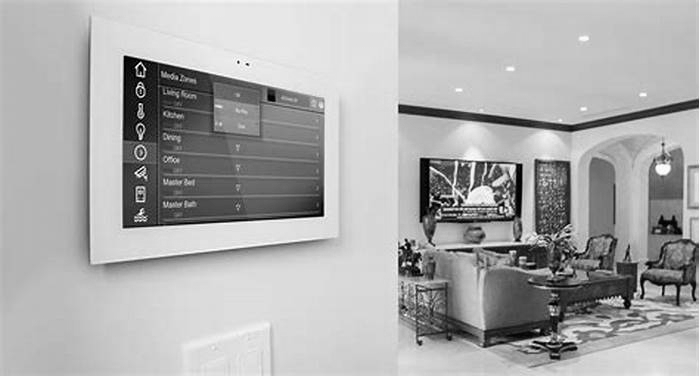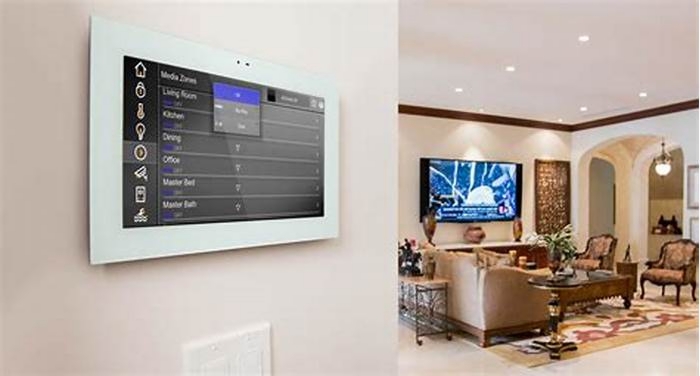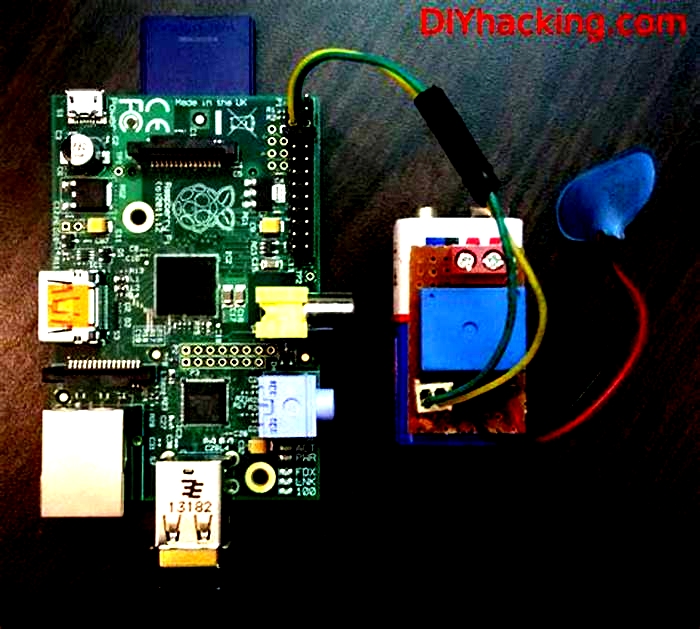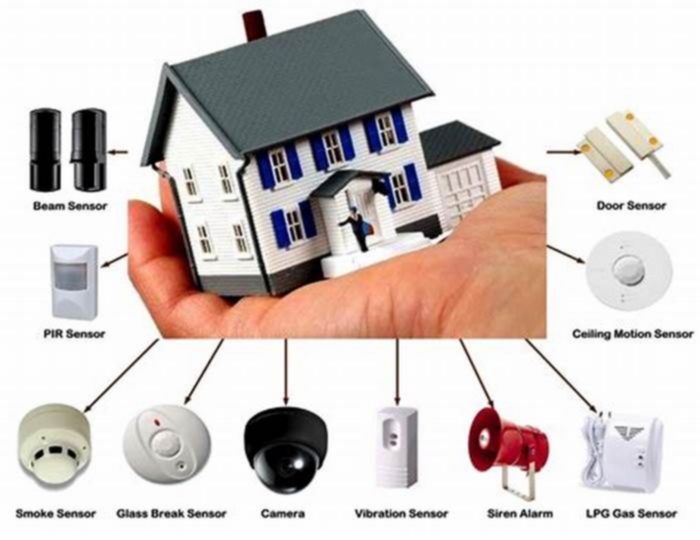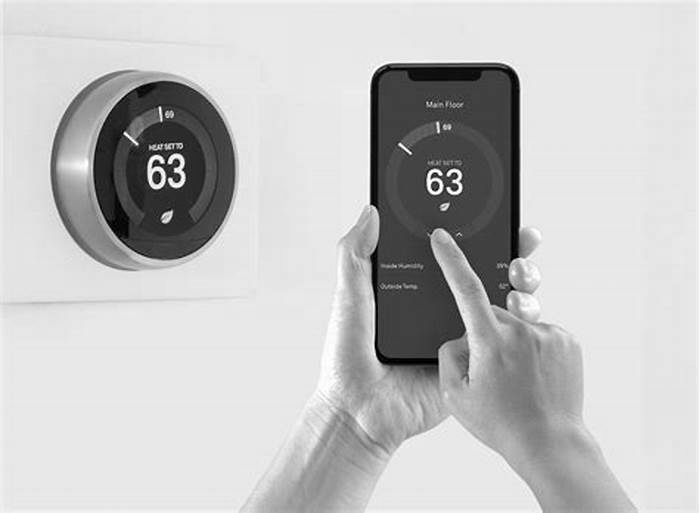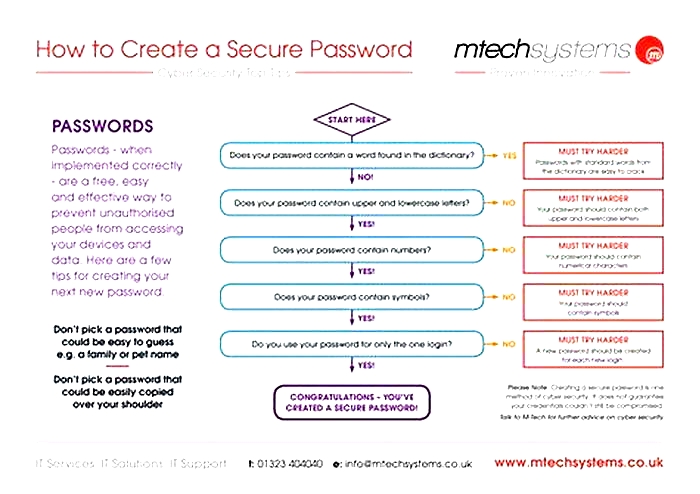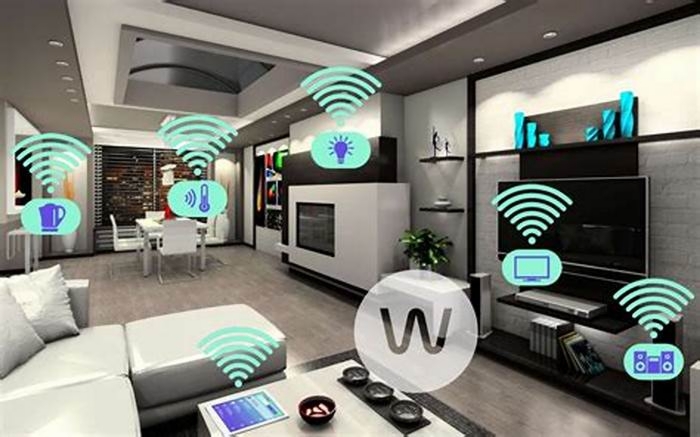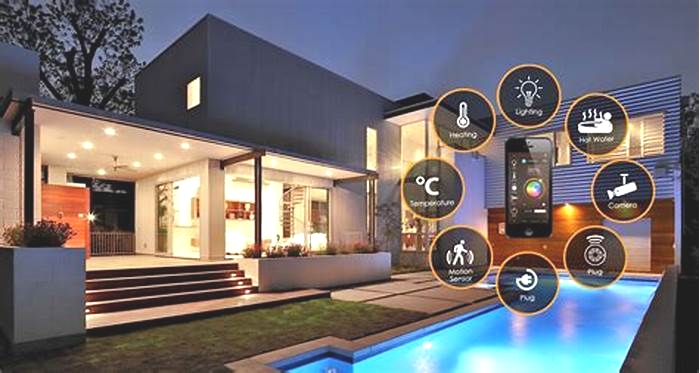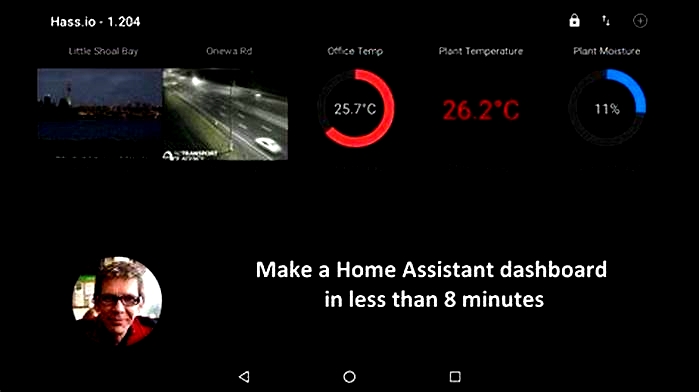Tutorial Setting Up a Home Automation System with Smart Devices
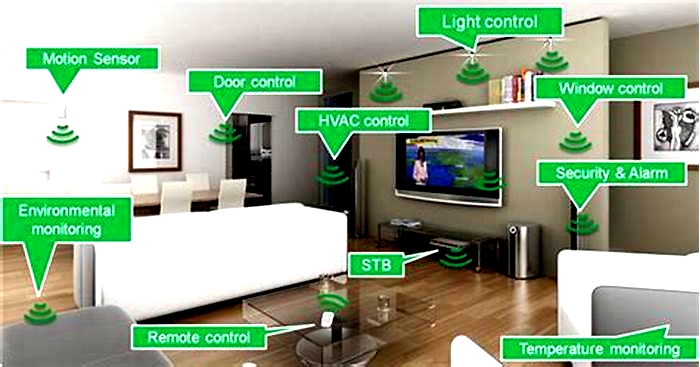
The Ultimate Guide to Setting Up Your Smart Home
Most ecosystems now have a way for anyone in the home to create their own profile, and some assistants can even identify who in the household is speaking, for a more tailored experience.Whatever solution you decide on, you should demonstrate how to use it, so that your family, roommates, and guests are comfortable with how it works.
Almost all smart-home devices require a reliable Wi-Fi connection. What you need to know are the two most-used frequencies: 2.4 GHz and 5 GHz. Most smart-home devices operate on the 2.4-GHz frequency, though thats starting to change. It has a longer range, but the 5-GHz frequency offers faster speeds.
A relatively new Wi-Fi protocol, named Wi-Fi 6E, supports 6-GHz, which is potentially even faster (Wi-Fi 7 will also use the 6 GHz band). Wi-Fi 6E can handle more devices, uses less power, and is more secure, but all of your gadgets need to support Wi-Fi 6E, including your mesh system or router, and it's even shorter range than 5 GHz. While more Wi-Fi 6E devices are hitting the market, it's mainly something you'll want to consider for future-proofing right now.
Congestion, where Wi-Fi signals interfere with each other, can be an issue, particularly for people living in apartments. You can use an app to check how busy your Wi-Fi channels are and potentially switch to a different channel, though most routers should handle this automatically. Another consideration is router limitations. Most modern routers support up to 250 devices in theory, but performance can suffer long before you reach the limit.
Make sure that you choose a good spot for your router, and remember that there are many ways to make your Wi-Fi faster. If you have a basic router supplied by your internet service provider (ISP) or an older model, upgrading to a new router could bring major benefits. Larger properties or homes with Wi-Fi dead spots may benefit from a mesh system.
To keep things secure, it is best to choose a long password with a mix of lowercase, uppercase, numbers, and special characters for your Wi-Fi. Consider connecting smart home devices to a separate network (some router manufacturers have an IoT network option) and always set up a Guest network for visitors to use (this is a standard router option now).
Bluetooth, Wi-Fi, or Smart Hubs?
Certain smart-home devices offer the option to connect via Bluetooth, Wi-Fi, or a special smart hub, like Philips Hue bulbs. Bluetooth is far slower and less reliable than Wi-Fi, and while Wi-Fi might seem like the easiest solution, a dedicated smart hub can help reduce congestion, offer more stability, and make connected devices more responsive.
Hubs generally use a different technology to connect devices, something that is low power, low bandwidth, and long range. Thread, Zigbee, LoRa, Z-Wavethe list of technologies goes on and on. While some hubs are special standalone devices, it's growing more common for manufacturers to integrate technologies like Thread into smart speakers, displays, routers, and other devices. The trade-off is that hubs need power and sometimes require a free Ethernet port in your router to plug into.
Verify Smart-Home Support
Some devices, like the Sonos Beam, have built-in Google Assistant and Alexa, meaning you don't need a separate smart speaker.
Photograph: SonosTo see if a smart-home product works with your ecosystem of choice, look for a logo on the box or webpage. At a minimum, you want to see one of these:
The best home automation systems: Compare SmartThings, Apple HomeKit, Amazon Alexa, and more
Amazon Alexa features: Intuitive voice controls | Fantastic automation power through the Alexa app | Easy-to-use interface
Voice control is a focal point in home automation. You want to feel like a high baller when you walk in and have a robot assistant waiting on you 24/7, right?
Having tried Google, Alexa, and Siri, I can tell you that for voice control fans, the right voice assistant can make or break your smart home. Personally, I find Alexa to be the most accurate in her responses and understanding of my commands, Google is probably middle of the road, and Siri still plays Sweet Caroline when I ask her to turn on the downstairs lights.
Now, Alexa isn't perfect, we know that. But she is a favorite for smart homes and going the Amazon Alexa route ensures vast compatibility, as it's the most popular voice assistant out there.
Setting up the Amazon Alexa app is pretty easy, the platform is built around Alexa, and you can easily add devices and customize your home. And with Amazon's Frustration-Free Setup, setting up new devices will become even easier with fewer steps.
I do wish that some things like routines and your devices were more easily accessible on the Alexa App. Though they are both available on the app's home, I find myself getting distracted by all of Alexa's suggestions. And, to be honest, the app just isn't the easiest to navigate in the beginning. You get used to it, however, and learn to easily make your way around it, but it shouldn't have to take as long as it does to reach that point.
Alexa is available on multiple Amazon devices, like the Echo speakers and Fire TV devices. It works through Wi-Fi, Bluetooth, Zigbee (on Echo 4th Gen, Echo Show except 1st Gen, and Echo Studio), and more recently, Matter.
The Alexa app has some pretty good automation power. Amazon is set on making America's voice assistant out of Alexa, so it's put quite a lot of effort into making sure she helps optimize productivity, routines, shopping, your access to information and current events, and how you cook and enjoy your music.
An Echo device, either a speaker or display, will give you access to thousands of skills and dozens of available routines to make the most of all your smart devices. You can set your Echo to detect a barking dog and have Alexa either play soothing music or let you drop in to soothe them. Alexa can even turn off a light when it hears snoring in the room, how creepy is that? Cool, I meant cool.
There are countless ways to take advantage of Alexa's automation power and, with popularity still pretty high, more are turning up every day.
ZigBee Home Automation with Home Assistant: A Complete Guide
ZigBee Home Automation with Home Assistant: A Complete Guide
If you're a homeowner looking to upgrade your home with smart devices, you've probably heard about ZigBee and Home Assistant. But what exactly are they, and how do they work together? In this guide, we'll cover everything you need to know about using ZigBee for home automation with Home Assistant.
What is ZigBee?
ZigBee is a wireless communication standard used for creating wireless networks of small, low-power devices. It's commonly used in home automation devices, such as smart lights, smart locks, and smart thermostats. ZigBee operates on the 2.4GHz frequency and uses mesh networking to extend its range.
One of the benefits of using ZigBee is that it consumes less power compared to other wireless standards. ZigBee uses a self-healing mesh network, meaning if one device stops working, the network can still function.
What is Home Assistant?
Home Assistant is an open-source home automation platform that allows you to connect and control all of your smart home devices from a single interface. It's compatible with over 1400 different smart devices, including ZigBee-enabled devices.
Home Assistant integrates with various smart home protocols, including ZigBee, Z-Wave, and Wi-Fi. This integration allows you to control all your smart devices using a single interface.
ZigBee Home Automation with Home Assistant
If you want to use ZigBee for home automation, you'll need a ZigBee hub or gateway. A ZigBee hub acts as a central hub for all your ZigBee-enabled devices. It connects to your home network, allowing you to control your devices using a smartphone app or voice assistant.
To integrate ZigBee with Home Assistant, you need to connect your ZigBee hub to your Home Assistant server. You can do this using an integration or a plugin. Once you've connected both devices, you'll be able to control all your ZigBee-enabled devices through Home Assistant.
Benefits of Using ZigBee with Home Assistant
There are several benefits of using ZigBee with Home Assistant for your home automation needs.
Increased Compatibility: One of the main benefits of using Home Assistant is its compatibility with multiple smart home devices. With ZigBee, you can connect a wide range of devices to your smart home system, including light bulbs, switches, and temperature sensors.
Easy to Use: Home Assistant offers a simple and intuitive interface, making it easy to control your smart devices. You can control your entire home automation system using your smartphone or Voice assistant.
Reliable Performance: ZigBee uses a self-healing mesh network, which helps ensure reliable performance. It can also operate with battery-powered devices, so you don't need to worry about power consumption.
Conclusion
ZigBee home automation with Home Assistant is a powerful combination for anyone looking to upgrade their home with smart devices. With increased compatibility, easy-to-use interface, and reliable performance, it's an excellent choice for any homeowner. By following the steps outlined in this guide, you can get started with ZigBee home automation in no time.
Posted on: Apr 14, 2022Last updated at: May 4, 2023MakeUseOf
Home automation allows you to control and automate your appliances and devices through smart plugs, switches, and sensors. However, a home automation system often comes with a hefty price tag. Fortunately, there are other cheaper ways to automate your home without spending much.
In this guide, we will show you how you can use an Alexa Echo device, such as an Echo Dot, and the Alexa app (available for both Android and iOS devices) to automate your home and control all your compatible smart home devices from one place. We have also shared how you can build DIY smart switches and sensors that work with Alexa.
Why Use Alexa for Home Automation?
Not long ago, we had set up a Home Assistant automation server on a Raspberry Pi to integrate all smart home devices and add automation based on the information received from various sensors, events, time of the day, etc. For instance, turning on the water pump every day at 5am and turning it off at 7am or when the tank is full. For this project, we built and installed a contact-less smart DIY water level sensor based on a cheap ultrasonic module.
However, Home Assistant is a rather advanced way of automating your home. Luckily, there is a much easier way to do home automation using the Alexa app. The advantage is that you dont need to set up any smart home automation software or server. Anyone with little to no technical skills can automate their home with the help of readily available smart switches, plugs, and sensors on the market.
Pro or advanced users can also build DIY smart switches or sensors and integrate them with Alexa to automate their homes.
The only downside is privacy when compared to Home Assistant. The data, such as when, how, and where you use your smart devices, is shared with Amazon. Thus, if you are someone who values privacy and doesnt want to share your activity data, go with Home Assistant to set up a local home automation server.
Finding Smart Devices Compatible With Alexa
To automate your home using the Alexa app, you need smart devices that support Alexa integration. You can find many online at reasonable prices, or build your own using an ESP8266 MCU, Tasmota firmware, and a relay module. However, before making any purchase, check the description and verify that the device supports Alexa out of the box or via skills.
Tuya is one of the manufacturers of smart devices that offers free-to-brand devices and its own cloud solution. Many retailers sell Tuya-manufactured products after rebranding in offline and online markets. All these smart devices, such as smart switches, lights, sensors, etc., work with Alexa out of the box.
After the purchase, install the required app and set up your devices. Also, test them with the Alexa command and verify that they are working. To discover and add devices to Alexa, you have to say:
Steps to Add Automation Using Alexa App
When it comes to automation, the Alexa app provides limited options. However, these options are good enough for basic automation and trigger your smart devices, appliances, etc. for your everyday needs. Heres how you can set up automation in the Alexa app.
In the Alexa app, you can create Routines to trigger devices based on events, time of the day, or input from a sensor you may have installed, such as a motion sensor or ambient light sensor.
Below is an example of how you can set up a Water Pump On and Off automation at a specific time every day in the Alexa app and broadcast a voice alert on the Echo device.
- Install, open, and sign in to the Alexa app using your Amazon account.
- Tap on More > Routines and then tap the + Icon at the top.
- Tap on Enter routine name to give your routine a name.
- Tap on When this happens. You can choose Voice command, schedule, smart home device, or Alarms as triggers for automation.
- Choose Schedule > At Time. In the Repeat section, you may choose Every day or desired days when you want the water pump or your device to run automatically and then select the time. Tap Next.
Next:
- Tap on Add action and then tap on Smart Home > All Devices. This will list all smart home devices integrated with Alexa or can be controlled by Alexa. Select the smart home device you want to turn on. In this case, its a motor switch.
- Tap Next, choose On, and then tap Next.
- Tap Save.
Finally:
- Open the Routines screen again and tap + icon in Add action.
- Choose Alexa Says > Customized. Type whatever you want Alexa to announce. It could be the status of the device. For instance, water pump is on. Tap Next > Next.
- Also, select the Echo device (smart speaker) listed under the FROM section. This will let you or others know that the water pump has started.
You can repeat these steps to set up a switch-off routine or automation. Similarly, you can trigger other smart home devices based on time, smart sensors (motion or light), voice commands, etc. to automate your house.
Build DIY Sensors and Switches That Work With Alexa
If you dont want to buy smart home devices, you can build DIY smart switches, lights, and sensors by flashing the Tasmota firmware on ESP8266 MCUs, such as the D1 Mini, ESP01, or NodeMCU. For instance, to build a smart switch, you need a D1 Mini and a relay module. Similarly, to build a dimmer module to control brightness or fan speed, you need a D1 mini and a dimmer module. They all integrate with Alexa with WeMo or Philips Hue emulation which is built-in Tasmota firmware.
In a nutshell, by pairing various sensors with a D1 Mini or NodeMCU and Tasmota firmware, you can build smart switches, lights, and sensors that integrate well will Alexa and help you automate your home.
Using Alexa for Home Automation
You now know the basics of how to use Alexa to automate smart devices in your home. We've guided you through an example of how to set up an automatic water pump to turn on at certain times, but the principle can be used with any connected device. Using Alexa is simpler than Home Assistant, and you can even add your own DIY smart switches and sensors if you want.

